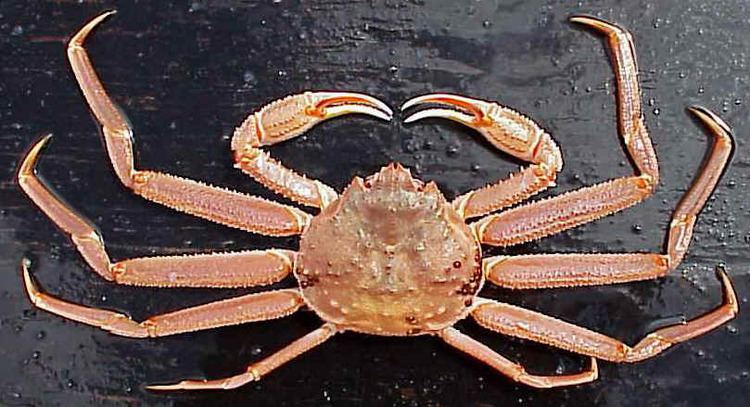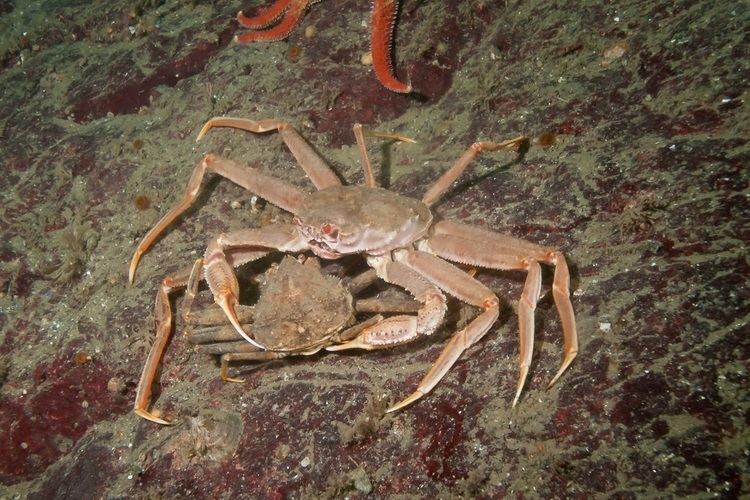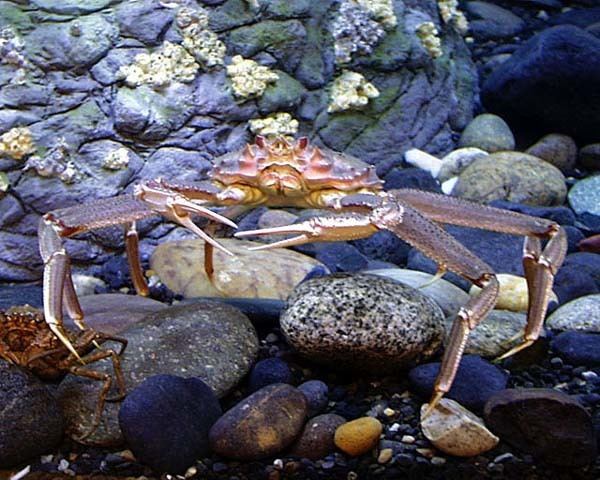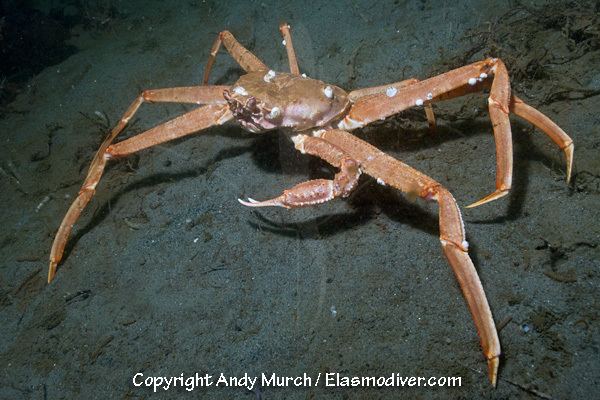Infraorder Brachyura Rank Species | Subphylum Crustacea Scientific name Chionoecetes bairdi Higher classification Chionoecetes Order Decapoda | |
 | ||
Similar Crab, Chionoecetes, Snow crab, American lobster, Paralithodes platypus | ||
Chionoecetes bairdi is a species of crab known alternatively as bairdi crab and tanner crab. C. bairdi is closely related to Chionoecetes opilio, and it can be difficult to distinguish C. opilio from C. bairdi. Both species are found in the Bering Sea and are sold commercially under the name "Snow crab". Tanner crabs have suffered from overfishing and as a result strict controls have been placed on tanner crab fisheries.
Contents

Biology

Tanner crabs are considered a short-tailed or "true" crab. They are decapods with pincer claws on their frontmost pair of legs. They can live over a decade with most adults reaching 1 to 4 pounds (0.45 to 1.81 kg) by the time they reach adulthood, usually after about five years. Females will incubate fertilized eggs for a full year before hatching during spring plankton blooming season. The larvae are at first able to swim, but lose this ability and settle to the bottom after about two months. The tanners' diet consist mostly of other ocean bottom crustaceans, clams and worms. Bottomfish and humans are their main predators. Little is known about their social structure except that the sexes remain mostly separate except during mating season. Tanner crabs are vulnerable to the parasite dinoflagellate, species of Hematodinium, that cause bitter crab disease.
Fisheries

Tanners are normally caught through the use of crab pots similar to those used to catch the larger King crab. The Bering Sea fishery for tanners opened in 1961 and soon became a major fishery in the North Pacific, with record catches as high as 332,000,000 pounds (151,000,000 kg).

Before the passage of the Magnuson Fishery Conservation and Management Act of 1976 much of the Bering Sea tanner crab was caught by Japanese and Soviet fishing vessels.

Due to the massive harvests, numbers declined sharply, with only 1,200,000 pounds (540,000 kg) harvested in 1984. Sensing the danger of overfishing tanner crab to the point of extinction, legislators and fisheries managers closed tanner crab fishing entirely in 1986 and 1987. Policy adjustments were made to limit the catch, but the fishery was closed again in 1997 due to a very poor harvest in 1996. In the mid-2000s fisheries managers introduced a "Crab Rationalization Program" based on similar programs in the North Atlantic and New Zealand. The program introduced individual fishing quotas based on each crab fishing boat's previous catches and a requirement that a percentage of the catch be offered for sale in the regions where it was caught. This program was popular with environmental and conservation groups, although some small-scale crab fisherman complained that it placed them at a disadvantage as they could never catch more than their allotted share even if there were more crab available. In addition to overfishing, researchers from the School of Fisheries and Ocean Sciences have hypothesized that prevailing winds may affect crab population numbers from one year to the next.
